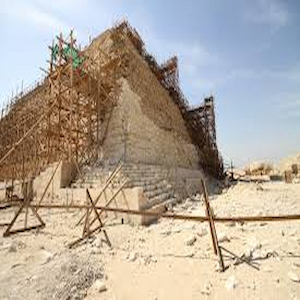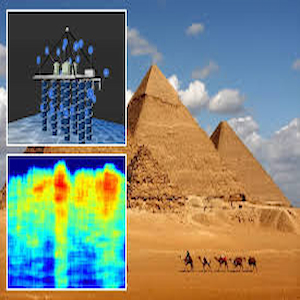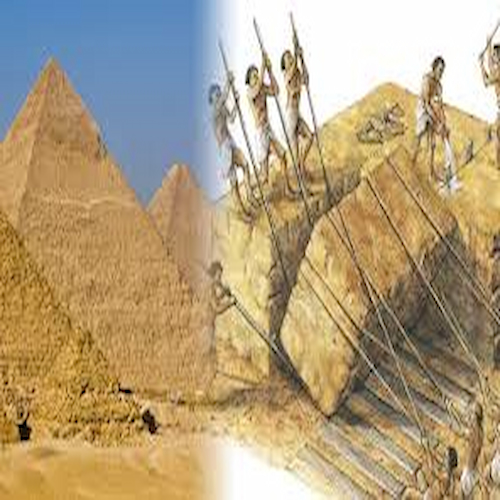Building the Egyptian pyramids on the West Bank of the Nile stands as one of the most intriguing topics in history. These monumental structures, particularly the Great Pyramid of Giza, have captured the imagination of people for centuries. The question of who built the pyramids involves not just an examination of the labor force but also the political, social, and technological contexts of the time.
When The Pyramids of Giza Were Constructed
The pyramids were primarily constructed during the Old Kingdom period of ancient Egypt, particularly from the Fourth Dynasty onward, around 2580 to 2560 BCE for the Great Pyramid. The most famous pyramids are found at Giza, near Cairo, where three massive pyramids were built for Pharaohs Khufu, Khafre, and Menkaure. These structures were intended as tombs to honor the pharaohs in their journey into the afterlife, reflecting the Egyptians’ strong belief in immortality. The scale and precision of these pyramids indicate not only advanced engineering skills but also a well-organized society capable of mobilizing vast resources.
Who Built the Pyramids of Giza?
Considering who exactly built the pyramids has long been a subject of debate. Popular culture often depicts enslaved people toiling in harsh conditions under the commands of ruthless overseers. However, modern archaeological evidence suggests a different narrative. Studies indicate that the workforce primarily consisted of skilled laborers who were well-fed and housed. These laborers included artisans, architects, and farmers who worked on the sites during the Nile’s inundation when agricultural activities were impossible. Interestingly, recent excavations of workers’ villages near the pyramids have revealed the remains of large communal complexes, suggesting that workers lived in relatively good conditions with access to food and healthcare.
A Monumental National Project
Moreover, ancient Egypt valued the work of these laborers and provided them with a sense of pride. The evidence includes inscriptions and graffiti left by workers, which celebrate their accomplishments. This indicates that the labor force was likely composed of individuals who took pride in their craftsmanship and contributions to the pharaoh’s legacy. Egyptologists now agree that the construction of the pyramids was a monumental national project that required the collective effort of thousands, if not tens of thousands, of skilled individuals.
Building the Egyptian Pyramids: Construction Techniques

The construction techniques employed for building the pyramids have fascinated engineers and historians alike. It is not entirely clear how the Egyptians moved the massive limestone and granite blocks, some weighing several tons, but several theories exist. One prevalent theory suggests the use of sledges to drag the stones across the sand. Recent experiments have shown that wetting the sand could significantly reduce friction, making it easier to transport these enormous blocks. Furthermore, ramps of various designs, including straight, zigzagging, and circular ramps, were likely used to elevate the blocks as construction progressed.
Building The Egyptian Pyramids: Mathematics and Astronomy
In addition to tools and innovations, the Egyptians had a sophisticated understanding of mathematics and astronomy, which played a crucial role in planning and aligning the pyramids. The Great Pyramid’s precise orientation to the cardinal points showcases an advanced level of knowledge in geometry. The belief in the afterlife and the need for perfect alignment further emphasized the importance of these structures, driving the ancient Egyptians to push the boundaries of contemporary engineering.
Building The Egyptian Pyramids: Societal Implications
The societal implications resulting from the construction of the pyramids were also profound. The projects mobilized thousands of workers and brought together different communities, leading to enhanced social cohesion. The pyramids were not merely tombs; they served as a reflection of the pharaoh’s power and divine status. As a result, they reinforced the centralized authority of the pharaoh and illustrated the significance of religion in public life. The extravagant displays of wealth and dedication to monumental architecture fostered a culture that aimed for immortality through legacy.
The Pyramids of Giza: New Discoveries

In recent years, advancements in technology, such as satellites and ground-penetrating radar, have allowed researchers to uncover hidden structures and better understand the pyramid complexes. These developments have led to new discoveries, reinforcing previously established theories while also challenging some long-held beliefs. For instance, the finding of additional burial sites near pyramids has led to discussions about the broader community involved in these massive undertakings. The interdisciplinary approaches combining archaeology, history, and technology are essential in piecing together the complex narrative of who built the pyramids and how.
The Future
Looking to the future, the continued interest in the pyramids offers opportunities for ongoing discovery and exploration. As more sophisticated technologies are developed, researchers will be able to analyze the remnants of ancient Egyptian civilization in unprecedented ways. Learning more about who built the pyramids can change our understanding of ancient societies and influence contemporary discussions about labor, organization, and community participation in monumental undertakings.
The Big Question
The question of who built the pyramids in Egypt is complex, crossing the boundaries of archaeology, history, and modern science. The skilled laborers who constructed these magnificent structures were likely motivated by pride and responsibility rather than solely compulsion. The advanced techniques they utilized, along with the societal implications of such monumental projects, highlight the sophistication of ancient Egyptian civilization. With ongoing research and technological advancements, our understanding continues to evolve, revealing not only the achievements of those who built the pyramids but also the enduring legacy of their contributions to human history. The pyramids remain a symbol of ancient ingenuity and a testament to the incredible capabilities of an organized and dedicated society.



